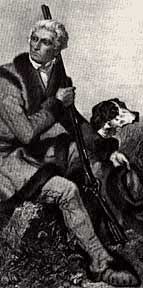7f. "What Is the American?"

Michel-Guillaume de Crèvecoeur was a French settler in the American colonies in the 1770s. Coming from France he could not believe the incredible diversity in the American colonies. Living in one area, he encountered people of English, Welsh, Scots-Irish, German, French, Irish, Swedish, Native American, and African descent. "What then is the American, this new man?" He could not be sure, but he knew it to be different from anything that could be found on the European side of the Atlantic.
At the time of the American Revolution, English citizens made up less than two thirds of the colonial population, excluding Native Americans. Nearly one fifth of the population was of African descent. Of the white population, there was still tremendous diversity, particularly in Pennsylvania, America's first melting pot. Most numerous of the non-English settler population were the Germans and the Scots-Irish.
Germans came to Pennsylvania at the turn of the 18th century in answer to advertisements in Germany placed by William Penn. The promise of religious freedom, economic opportunity and freedom from war accelerated the arrival of Germans in the 1700s. English-speaking Americans misinterpreted the word Deutsch — the German word for German — and the settlers became consequently known as the Pennsylvania Dutch. Along with linguistic and cultural diversity, the Germans brought new religions to America, the most prominent of which was Lutheranism.
The Scots-Irish were twice displaced. They originated in the Scottish Lowlands, but fled to Ireland to escape poverty. They found little prosperity there, as well. In addition, the Catholic Irish had little desire to share their island with the Presbyterian Scots, so they migrated to America. Much of the best farmland had already been claimed, so many Scots-Irish moved into Appalachia. Here they frequently fought with the Indians and resented being controlled by wealthy planters and politicians — reminding them of what they had left behind.
Soon these cultures began to blend. Americans became culturally distinct from the English. Their language, culture, and religions differed greatly from those of Mother England. Most Americans were born here and never even visited England during their lives. The Germans were never loyal to England. The Scots-Irish had great resentment toward Great Britain. The ties that bound them to the British Crown were weakening fast.






